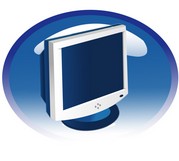-
基础教育
- 教材:
-
- 全部
- 中国地图出版社
- 人教版
- 人教版2012
- 人教版2013版
- 人教版PEP(3年级)
- 人教版义务
- 人教版新课标
- 人教版新起点(1年级)
- 人教版(Go for it)
- 人教版(三年级起点)
- 人教版(三年级起点)2012-2013
- 人教版(版本不明)
- 人教社2016年新编教材
- 冀教版
- 冀教版(三年级起点)
- 北京版
- 北师大版
- 北师大版(2016)
- 北师大版(1年级)
- 北师大版(3年级)
- 北师版2013
- 华东师大版
- 外研社版
- 外研社(三年级起点)
- 外研社(广西专用)
- 广州新版(三年级起点)
- 广州版
- 开心学英语
- 教育科学(3年级起点)
- 教育科学(广州版)
- 新华东师大版
- 新起点英语
- 朗文英语
- 河北版
- 湘少版(3年级起点)
- 牛津上海版
- 牛津上海版(深圳新版)
- 牛津英语
- 粤教版
- 苏教版
- 语文S版
- 语文版
- 首师大版
- 香港现代版
- 齐齐学英语
- 高等教育
- 职业教育
-
The mechanism for organising and propelling 普通类
Having started early in the 1920s as a spontaneously launched educational activity by civil organisations under the influence of American audio-visual theory and practice, Chinese educational technology was later put under governmental management. This paper is composed of five parts covering mainly the historical development of educational technology in China. Part 1 is a brief history of educational technology in China. Part 2 presents the major tasks of management in educational technology. Part 3 talks about the organisation of educational technology management within universities and schools. Part 4 discusses civil organisations of educational technology in China. And part 5 is a conclusion about the managerial features of Chinese educational technology.
-
Educational technology in China 普通类
This paper elaborates the two different academic views of the identity of educational technology in China at the current time—advanced-technologyoriented cognition, known as Electrifying Education, and problem-solvingoriented cognition, known as Educational Technology. It addresses five main modes of educational technology in China: as a programme, as a research direction, as a discipline area, as an institution and as an enterprise. The authors provide a brief description of the field of educational technology in China.
-
Editorial 20104004 普通类
Even though educational technology exists as a field of study and practice which is well developed and accepted across theworld, it differs from country to country. In China, all of the possible modes of educational technology are unique compared with those in other countries. But there are also many problems in the development of each mode. Both its uniqueness and its problems clearly illustrate part of the nature of educational technology, or some of the developing locus, which we believe will inspire the field of educational technology elsewhere in the world._1072 539..540
-
Editor’s introduction 20100404 普通类
I am delighted that we are able to publish this collection of papers, put together by Liu Meifeng who is BJET’s corresponding editor for China. The eight papers and the four colloquia in the special issue provide a comprehensive view of educational technology in a country where the numbers of learners and institutions almost defy comprehension.
-
Second language teaching and learning 普通类
Second language teaching and learning in the net generation
-
Leading learning 普通类
I am, however, somewhat disconcerted to find only minimal consideration of the issue of leading learning with technology.While professing to be “acutely aware” (p 83) of the importance of technology in the learning process and offering two international case studies on the integration of technology in schools—one successful and one a failure—the authors provide no in-depth analysis of how distributed leadership might address the acute need to optimise the affordances of technology for the improvement of student-centred learning. I feel that in the digital world of the 21st century such consideration could have further enhanced the book’s already very considerable value to its target audience of academics and others working in the field of educational leadership.
-
Google Scholar and more 普通类
It provides a detailed chronology of how Google developed and over a period of time occupied the top slot of search engines. But Google is now beyond search algorithms. It offers many applications, tools and gadgets to its registered users—such as providing gigabytes of storage space, the launch of Google Answers, or how Blogger can be used as an instructional tool. Different applications and tools (Google Scholar, Google Book Search and many others) area here analysed by the editors in terms of their coverage, usability and performance and then they make recommendations. They further discuss what Google’s future directions of development may be.With increasing interactivity and online collaboration and use of social media, Google has greatly transformed the instructions, interactions and collaboration over the internet. Not only collaboration, indeed, but the integration of different online applications also has had a facelift.
-
Engineering play 普通类
Section II is the meat of the book. Chao takes us on a journey of discovery starting at the network level, through server installation and management, software installation and management, authentication, administration, security management, and virus attack management, and culminating with the users’ desktop machines. The journey is easier because of excellent external references and examples of installation processes. His commentary gives the reader confidence that the end is achievable, but this is a book about IT rather than ET.
-
Teaching academic and professional English online 普通类
Although the software is free, the choice of an open source solution has hidden complexities and costs in the recruitment and training of appropriate staff. Those who venture down this route using Chao’s book as a guide will be assured of a flexible and adaptable LMS that is reactive to teacher requirements and user demands.
-
Vygotsky at work and play 普通类
We apologise for a double error with our March 2010 (41(2)) review of Atkins, Liz (2009) Invisible students, impossible dreams Trentham. The correct ISBN is 978-1-85856-451-7 and the publisher’s w-address for the book is http://www.trentham-books.co.uk/acatalog/Invisible_Students__ Impossible_Dreams.html. Thanks to Inge Martin for telling us about this.

